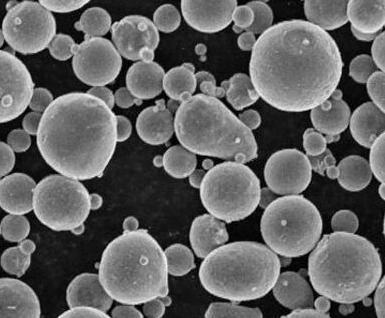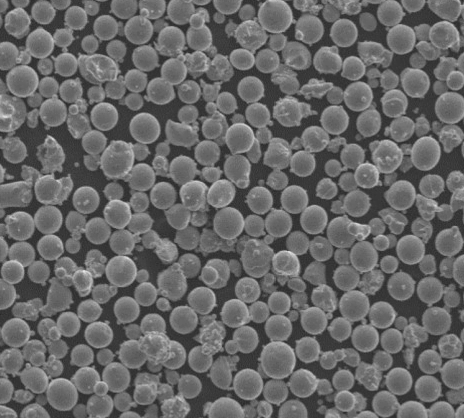Nickelkarbonatpulver
Innehållsförteckning
Nickelkarbonatpulver är en viktig industriell kemikalie med ett brett spektrum av användningsområden. Denna artikel ger en översikt över nickelkarbonatpulver och dess nyckelegenskaper, applikationer, specifikationer, prissättning och mer.
Översikt över nickelkarbonatpulver
Nickelkarbonat, kemisk formel NiCO3, är ett oorganiskt salt som bildar ett ljusgrönt pulver under standardförhållanden. Några viktiga detaljer om nickelkarbonatpulver inkluderar:
Sammansättning
- Består i huvudsak av nickel, kol och syre
- Innehåller vanligtvis 57-59% nickel
- Finns i tekniska och rena kvaliteter
Viktiga egenskaper
- Fint grönt kristallint pulver
- Densitet cirka 3,7-3,9 g/cm3
- Smältpunkt sönderdelas vid 240°C innan smältning
- Löslig i syror, ammoniak; olöslig i vatten
- Icke brännbart utan flampunkt
Typiska föroreningar
- Järn, svavel, klorid, kiseldioxid
- 1-3% för tekniska kvaliteter, mindre än 1% för rena kvaliteter
Faror
- Låg akut toxicitet
- Kronisk exponering kan orsaka hudsensibilisering, irritation i andningsvägarna
Tillämpningar
- Galvanisering - matt nickelbeläggning
- Keramik - pigment, glasyrer
- Katalysatorprekursor
- Batterier - nickelelektroder
- Andra användningsområden
Nickelkarbonatets mångsidighet som kemisk mellanprodukt gör det användbart inom industrier som galvanisering, keramik, katalys och batterier.

Typer av Nickelkarbonatpulver
Nickelkarbonatpulver finns i olika kvaliteter för teknisk användning och användning med hög renhet:
| Typer | Nickelinnehåll | Föroreningar | Partikelstorlek | Typiska användningsområden |
|---|---|---|---|---|
| Teknisk | 57-59% | Högre | Pulver till granulat | Elektroplätering, keramik |
| Ren / Raffinerad | Min 59% | Lägre (<1%) | Mycket fint pulver | Katalysator, batterier |
Det finns också olika former av nickelkarbonatpulver när det gäller sammansättning:
| Formulär | Sammansättning | Fastigheter | Användningsområden |
|---|---|---|---|
| Basisk nickelkarbonat | 2NiCO3.3Ni(OH)2.xH2O | Grönaktig nyans, högre nickelhalt | Företrädesvis för plätering |
| Neutral nickelkarbonat | NiCO3 | Grågrön, lägre nickel | Vissa tekniska användningsområden |
I denna tabell jämförs några egenskaper mellan grundformen och den neutrala formen:
| Fastighet | Basisk nickelkarbonat | Neutral nickelkarbonat |
|---|---|---|
| Löslighet i ammoniak | Löslig | Olöslig |
| Nickelinnehåll | Högre (~58%) | Lägre (~50%) |
| Stabilitet | Mindre stabil | Mer stabil |
| Pris | Högre | Lägre |
Sammanfattningsvis finns det alltså tekniska kvaliteter och kvaliteter med hög renhet, basiska och neutrala sammansättningar och olika pulverkaraktärer för att passa slutapplikationerna.
Produktionsmetoder
De viktigaste produktionsvägarna för nickelkarbonatpulver inkluderar:
- Direkt kolsyresättning - Nickeloxidens reaktion med koldioxidgas
- Indirekt karbonatisering - Ammoniakprocess med nickelmatta
- Substitutionsmetod - Jonbytesreaktion med utgångspunkt från nickelklorid eller -sulfat
Tabellen nedan visar en jämförelse mellan metoderna:
| Produktionsväg | Råvaror | Typiskt nickelinnehåll | Föroreningar | Skalbarhet |
|---|---|---|---|---|
| Direkt kolsyresättning | Nickeloxid | 57-59% | Medium | Mindre partier |
| Indirekt karbonatisering | Nickel matt | 57-59% | Låg | Storskalig |
| Substitutionsmetod | Nickelsalter | 57-60% | Mycket låg | Flexibel |
Den direkta karbonatiseringsmetoden är en enkel process men kan medföra föroreningar från nickeloxid av lägre kvalitet. Den indirekta ammoniakprocessen använder mycket ren nickelmattråvara. Substitutionsmetoden erbjuder stor renhet och flexibilitet men kräver ytterligare nickelsaltråvaror.
Specifikationer
Nickelkarbonatpulver finns tillgängligt enligt olika internationella specifikationer och standarder:
| Standarder | Minimum Nickel (%) | Maximal föroreningshalt | Partikelstorlek (Mesh) |
|---|---|---|---|
| ASTM B154 | 57 | 3% Fe,1% S,1% insol | >100 maskor |
| GB/T 3562 | 58 | 1,7% Fe,1% Cl,1% S | – |
| QC/T 783-2008 | – | 0,005% Co;0,01% Cu;1% insol | – |
Nickelkarbonatspecifikationerna innehåller krav på kemisk sammansättning, minimiinnehåll av nickel, gränser för järn, svavel och andra föroreningar samt pulverpartikelstorleksfördelning.
Betyg
Nickelkarbonat sorterat efter nickelhalt (%):
- Låg: 50-56%
- Standard: 57-59%
- Hög renhet: Min 59%+.
Finare distinktioner kan göras mellan tekniska, industriella, rena etc. kvaliteter baserat på orenhetsnivåer och användningskrav.
Förpackning
Vanliga förpackningsalternativ:
- Små påsar/behållare - 1 kg, 5 kg, 25 kg
- Trummor - vanligtvis 50 kg, 100 kg
- Supersäckar - 500 kg till 1500 kg
Förpackningsmaterialet är vanligtvis plast eller plastfodrade påsar/behållare. Större kvantiteter levereras i säkrade trummor eller supersäckar. Anpassade förpackningar kan vara möjliga för bulkanvändare.
Prissättning
Prisuppskattning för nickelkarbonatpulver (USD per metriskt ton):
| Betyg | Renhet | Prisintervall |
|---|---|---|
| Teknisk | 57-58% Ni | $14,000 – $16,000 |
| Förfinad | Min. 59% Ni | $17,000 – $19,000 |
| Hög renhet | >99% | $21,000 – $25,000 |
Nyckelfaktorer som påverkar prissättningen av nickelkarbonat:
- Priset på nickel - Direkt kopplad till LME:s nickelindexpriser
- Renhet - Högre renhetsgrad ger högre pris
- Kvantitet - Köp av stora volymer ger vanligtvis rabatterade priser
- Geografiskt läge - Dynamik i utbud och efterfrågan i regionen
Aktuella priser erhålls bäst från leverantörer och distributörer av nickelkarbonat direkt baserat på kvalitet, volym etc.
Tillämpningar och användningsområden
Viktiga industriella tillämpningar och användningar av nickelkarbonatpulver inkluderar:
Elektroplätering
- Används för att deponera matta eller halvblanka nickelbeläggningar
- Billigare än nickelsulfat och -klorid
- Basisk nickelkarbonat föredras för att undvika föroreningar som påverkar pläteringskvaliteten
Keramik
- Källa till nickel för färgning av glasyrer och keramisk pigmentering
- Ger unika gröna, bruna, gula och metalliska effekter
Katalysator Prekursor
- Omvandlas till nickelmetall eller nickeloxid som används i katalysatorer
- Katalysatorer för vätebildning, dehydrogenering och avsvavling
Batterier
- Katodmaterial i nickelelektroder för uppladdningsbara nickelbatterier
- Kräver raffinerat basiskt nickelkarbonat med mycket hög renhet
Andra användningsområden
- Tillverkning av nickelsalter - nickelsulfat, -acetat, -klorid etc.
- Legeringar och metallprodukter
- Färgning och polering av glas
- Magnetiska material
- Tillsatsmedel för portlandcement
I denna tabell sammanfattas några applikationsspecifika tekniska specifikationer:
| Tillämpning | Grad som behövs | Typiskt nickelinnehåll | Gränser för orenheter | Partikelstorlek |
|---|---|---|---|---|
| Elektroplätering | Grundläggande | 57-58% | Lägre järn | Granulat, pulver |
| Keramik | Antingen | 57-59% | Avslappnad | – |
| Katalysator | Hög renhet | Min 99% | Mycket låg | – |
| Batterier | Hög renhet, basisk | 99.9-99.99% | Extremt låg | Ultrafint <1 mikron |
Inom olika områden bearbetas nickelkarbonatpulver till slutprodukter för industrier från metallplätering till högpresterande batterier.
Leverantörer och tillverkare
Några ledande globala leverantörer och tillverkare av nickelkarbonatpulver inkluderar:
| Företag | Platser | Produktionskapacitet | Typiska produkter |
|---|---|---|---|
| Jilin Jien Nickel Industry Co, Ltd. | Kina | 20.000 ton | Tekniska, rena kvaliteter |
| INCO Limited | Kanada | 10.000 ton | Batteri, katalysatorkvaliteter |
| Chengtun-gruppen | Kina | 10.000 ton | Låg/hög kvalitet |
| Umicore | Europa, Asien | NA | Hög renhet |
| Amerikanska element | USA | NA | Hög renhet |
Distributörer och återförsäljare
- Alpha Chemicals
- Amerikanska element
- Glentham Life Sciences
- Hefei TNJ Kemisk
- Loba kemi
- Strem Kemikalier
- Shanghai Ruizheng Chemical
- BeanTown Chemical
- Karriär Henan Chemical
Fördelar med nickelkarbonat
Några av de viktigaste fördelarna med att använda nickelkarbonatpulver jämfört med andra nickelföreningar:
| Fördelar | Detaljer |
|---|---|
| Lägre kostnad | Billigare än nickelsulfat eller nickelklorid |
| Lättare hantering | Mindre hygroskopisk än nickelklorid som absorberar fukt snabbt |
| Färre orenheter | Innehåller mindre problematiska ämnen som natrium, kalcium och magnesium än andra nickelsalter |
| Stabil sammansättning | Nickelkarbonat i basform bibehåller ett enhetligt Ni:CO3-förhållande under bearbetningen |
| Enhetliga insättningar | Basiska nickelkarbonater ger släta, matta nickelbeläggningar från pläteringsbad utan gropfrätning |
| Enkel dispergering | Inga problem med klumpbildning - dispergerar väl i vattenlösningar för plätering |
De viktigaste skälen till att nickelkarbonat föredras i vissa tillämpningar är faktorer som ekonomi, hantering, konsistens och prestanda.
Jämfört med nickelsulfat
Jämförelse mellan nickelkarbonat och -sulfat:
- Lägre prispunkt
- Mindre lösliga men lättare att filtrera restprodukter
- Producerar mörkare nickelplåt
- Kan introducera svavelbaserade defekter i avlagringar som påverkar duktiliteten
Jämfört med nickelklorid
Jämförelse mellan nickelkarbonat och klorid:
- Mycket lägre kostnad
- Inga problem med hydroskopisk fuktabsorption under lagring
- Mindre korrosiv för utrustning som t.ex. pläteringstankar
- Producerar plåt med sämre duktilitet än kloridlösningar
Sammanfattning
Medan nickelsulfat och -klorid har områden där deras pläteringsprestanda glänser, erbjuder karbonat den bästa allroundkombinationen av prisvärdhet, hantering och beläggningskvalitet, vilket gör den till en mångsidig pläteringskemikalie.
Begränsningar för nickelkarbonat
| Nackdelar | Fördjupning |
|---|---|
| Olöslighet | Har relativt låg löslighet, vilket kan kräva omrörning, uppvärmning eller ammoniak för att helt lösas upp i pläteringslösningar |
| Långsam upplösning | Svagare upplösningsförmåga än andra lösliga nickelsalter - kräver processjusteringar |
| Föroreningar | Tekniska kvaliteter kan innehålla orenheter som påverkar kvaliteten |
| Toxicitet | Risk för inandning om pulver inte kontrolleras |
Utmaningar vid plätering
Några specifika begränsningar vid användning av nickelkarbonatpulver för galvanisering jämfört med alternativ:
- Kräver badkemi med högre pH-värde för upplösning
- Kan introducera främmande element som järn som påverkar avlagringar
- Större filtreringsbehov för att fånga upp oupplösta partiklar
- Längre upplösningstider vilket minskar genomströmningen i pläteringsproduktionen
- Ytkvaliteten är lägre än vid sulfat- eller kloridbaserad plätering
- Slutlig plåtduktilitet inte lika hög som för sulfat eller klorid
Dessa begränsningar kan dock mildras genom korrekt badberedning, filtrering och processkontroller.
Begränsande åtgärder
- Börja med basiskt nickelkarbonatpulver med högre renhetsgrad där så är möjligt
- Använd ammoniak, uppvärmning och omrörning för att förbättra upplösningen
- Använd magnetseparatorer eller effektiv filtrering för att avlägsna partikelföroreningar
- Lös upp pulvret i nickelpläteringslösningen innan det tillsätts i pläteringsbadet
- Justera driftsparametrarna - pH, temperatur, strömtäthet - för att förbättra kvaliteten
- Överväg att använda nickelkarbonat tillsammans med sulfat- eller kloridsalter för att balansera kostnad och prestanda
Säkerhet och toxicitet
Nickelkarbonatpulver kräver säkra hanteringsrutiner:
- Inandning av damm - Använd andningsskydd; undvik dammbildning
- Hudkontakt - Använd handskar; tvätta drabbade områden
- Ögonkontakt - Använd skyddsglasögon; skölj ögonen vid exponering
- Förtäring - Förtär inte; spola ut munnen vid förtäring
Riktlinjer för exponering
- OSHA PEL 1 mg/m3 (nickel)
- ACGIH TLV 0,1 mg/m3 (nickel)
Toxicitetsdata
- Låg akut oral/dermal toxicitet
- Kan ge upphov till hudsensibilisering vid upprepad kontakt
- Högre risk för kronisk toxicitet ju renare kvalitet
Kontrollera alltid säkerhetsdatablad (SDS) från leverantörer för aktuell och detaljerad säkerhetsinformation innan du hanterar eller bearbetar nickelkarbonatpulver.

Vanliga frågor
F: Är nickelkarbonat naturligt eller syntetiskt?
S: Kommersiellt tillgängligt nickelkarbonat framställs syntetiskt genom kemisk omvandling av nickelhaltiga malmer. Naturligt nickelkarbonatmineral är mycket sällsynt.
F: Vad är basiskt kontra neutralt nickelkarbonat?
A: Basiskt nickelkarbonat innehåller nickelhydroxid medan neutral form är ren NiCO3. Basiska typer har högre nickelhalt och bättre pläteringsegenskaper.
F: Vad används nickelkarbonat till?
A: De viktigaste användningsområdena är galvanisering för att deponera nickelskikt, keramik för färgning och glasyr, katalysatorprekursorer och nickelmetallbatterier.
F: Är nickelkarbonat farligt?
A: Den har låg akut toxicitet men långvarig exponering medför högre risker för kronisk toxicitet genom nickelackumulering och inandning. Korrekt personlig skyddsutrustning ska användas vid hantering.
F: Vilka är de vanligaste industristandarderna för nickelkarbonat?
A: Viktiga specifikationer för nickelkarbonatpulver styrs av standarder som ASTM B154, GB / T 3562 och QC / T 783-2008 som täcker sammansättning, renhet och nickelnivåer.
F: Vad reagerar nickelkarbonat med?
A: Reagerar med mineralsyror och bildar nickelsalter. Blir långsamt brunsvart i fuktig luft genom bildning av nickelhydroxid på ytan. Sönderdelas innan det smälter vid höga temperaturer. Var försiktig med alkalier.
F: Är nickelkarbonat lösligt i vatten?
S: Nej, nickelkarbonat har en mycket låg löslighet i vatten. Det kräver uppvärmda sura pläteringslösningar eller ammoniak för att helt lösas upp för applikationer som elektroplätering.
F: Vilka är alternativen till att använda nickelkarbonat?
A: Beroende på användningsområde kan alternativen vara - nickelsulfat, nickelklorid för plätering; nickeloxid, nickelhydroxid för batterier; andra nickelföreningar för katalysatorer.
Dela på
MET3DP Technology Co, LTD är en ledande leverantör av lösningar för additiv tillverkning med huvudkontor i Qingdao, Kina. Vårt företag är specialiserat på 3D-utskriftsutrustning och högpresterande metallpulver för industriella tillämpningar.
Förfrågan för att få bästa pris och anpassad lösning för ditt företag!
Relaterade artiklar

Högpresterande segment för munstycksvingar: Revolutionerande turbineffektivitet med 3D-utskrift i metall
Läs mer "Om Met3DP
Senaste uppdateringen
Vår produkt
KONTAKTA OSS
Har du några frågor? Skicka oss meddelande nu! Vi kommer att betjäna din begäran med ett helt team efter att ha fått ditt meddelande.

Metallpulver för 3D-printing och additiv tillverkning
FÖRETAG
PRODUKT
cONTACT INFO
- Qingdao City, Shandong, Kina
- [email protected]
- [email protected]
- +86 19116340731
















